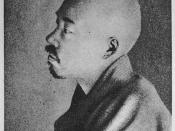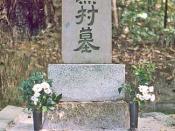Haiku is one of the most important form of traditional japanese poetry. Haiku is, today, a 17-syllable verse form consisting of three metrical units of 5, 7, and 5 syllables. Since early days, there has been confusion between the three related terms Haiku, Hokku and Haikai. The term hokku literally means "starting verse", and was the first starting link of a much longer chain of verses known as haika. Because the hokku set the tone for the rest of the poetic chain, it enjoyed a privileged position in haikai poetry, and it was not uncommon for a poet to compose a hokku by itself without following up with the rest of the chain.
Largely through the efforts of Masaoka Shiki, this independence was formally established in the 1890s through the creation of the term haiku. This new form of poetry was to be written, read and understood as an independent poem, complete in itself, rather than part of a longer chain.
Strictly speaking, then, the history of haiku begins only in the last years of the 19th century. The famous verses of such Edo-period (1600-1868) masters as Basho, Yosa Buson, and Kobayashi Issa are properly referred to as hokku and must be placed in the perspective of the history of haikai even though they are now generally read as independent haiku. In HAIKU for PEOPLE, both terms will be treated equally! The distinction between hokku and haiku can be handled by using the terms Classical Haiku and Modern Haiku.
Modern Haiku.
The history of the modern haiku dates from Masaoka Shiki's reform, begun in 1892, which established haiku as a new independent poetic form. Shiki's reform did not change two traditional elements of haiku: the division of 17 syllables into three groups of 5, 7, and 5 syllables...



Needs minor improvements...
There are a few grammatical errors in here, but otherwise good. An example of a haiku poem would have been of benefit to people who have never read one.
1 out of 1 people found this comment useful.